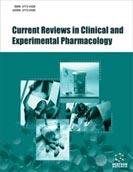Abstract
Background: Parkinson's disease is the second most common neurological ailment. It is also known that it affects practically all other brain components, although only gradually. Animal models are mostly used to test the efficacy of treatment against a specific enzyme and aid in creating a new drug dose.
Objective: The purpose of this review is to highlight in vivo Parkinson's disease screening approaches, as well as the mechanism of action of each drug involved in Parkinson's disease development, and discuss the limitations of each model. In addition, it also sheds light on Parkinson's disease genetic models.
Methods: The data for the publication was gathered from databases, such as PubMed, Bentham Science, Elsevier, Springer Nature, Wiley, and Research Gate, after a thorough examination of diverse research findings linked to Parkinson’s disease and its screening models.
Results: Each chemical or drug has a unique mechanism for causing disease, whether through the production of reactive oxygen species or the blockage of the dopamine receptor. Almost every disease symptom, whether physical or behavioral, is covered by each of the constructed models' unique set of indicators and symptoms.
Conclusion: Animal models are typically used to assess a medicine's activity against a specific enzyme and aid in the creation of a new drug dose. The process, restrictions, and mechanisms interfering with the screening, as well as the level of animal suffering, must all be thoroughly reviewed before any model for screening for Parkinson's disease can be implemented.
Keywords: Parkinson’s disease, 6-hydroxydopamine model, 1-methyl 4-phenyl-1, 2, 3, 6-tetrahydropyridine model, reserpine antagonism, chlorpromazine antagonism, tremorine, oxotremorine antagonism.
Graphical Abstract
[http://dx.doi.org/10.1186/2047-9158-1-11] [PMID: 23211054]
[http://dx.doi.org/10.1016/0166-2236(89)90007-6] [PMID: 2475945]
[http://dx.doi.org/10.1602/neurorx.1.1.139] [PMID: 15717014]
[http://dx.doi.org/10.1016/S0166-4328(89)80121-4] [PMID: 2547396]
[http://dx.doi.org/10.1002/1098-2396(20000901)37:3<171:AID-SYN1>3.0.CO;2-R] [PMID: 10881039]
[PMID: 6326007]
[http://dx.doi.org/10.1016/S0301-0082(01)00003-X] [PMID: 11403877]
[http://dx.doi.org/10.1016/j.bbr.2005.11.026] [PMID: 16413939]
[http://dx.doi.org/10.1002/ana.20937] [PMID: 16862585]
[http://dx.doi.org/10.1016/0006-291X(90)90498-C] [PMID: 2167668]
[http://dx.doi.org/10.1046/j.1471-4159.1998.71062549.x] [PMID: 9832155]
[http://dx.doi.org/10.1073/pnas.80.14.4546] [PMID: 6192438]
[http://dx.doi.org/10.1016/0304-3940(88)90095-X] [PMID: 2907373]
[http://dx.doi.org/10.1016/j.expneurol.2009.06.005] [PMID: 19523952]
[http://dx.doi.org/10.1038/1771238a0] [PMID: 13334520]
[http://dx.doi.org/10.1016/0006-291X(61)90162-0] [PMID: 13693213]
[http://dx.doi.org/10.1007/BF00997117] [PMID: 4393397]
[http://dx.doi.org/10.1016/0014-4886(83)90004-3] [PMID: 6832273]
[http://dx.doi.org/10.1136/jnnp.22.1.11] [PMID: 13642073]
[http://dx.doi.org/10.1016/0028-3908(87)90110-9] [PMID: 3670563]
[http://dx.doi.org/10.1016/0091-3057(82)90226-X] [PMID: 6124006]
[http://dx.doi.org/10.1016/S1054-3589(08)60736-X] [PMID: 9327887]
[http://dx.doi.org/10.1007/s00213-002-1081-7] [PMID: 12073160]
[http://dx.doi.org/10.1001/archpsyc.1991.01810360061009] [PMID: 1845228]
[PMID: 29618426]
[PMID: 27731807]
[http://dx.doi.org/10.1016/B978-008045046-9.00375-2]
[http://dx.doi.org/10.1016/j.biopsych.2005.08.009] [PMID: 16229823]
[http://dx.doi.org/10.2165/00002018-200528030-00002] [PMID: 15733025]
[http://dx.doi.org/10.1176/ajp.134.10.1154] [PMID: 900277]
[http://dx.doi.org/10.1002/mds.870090115] [PMID: 8139611]
[http://dx.doi.org/10.1192/apt.11.6.440]
[http://dx.doi.org/10.1345/aph.1A333] [PMID: 12196047]
[http://dx.doi.org/10.4103/0253-7176.155636] [PMID: 25969611]
[http://dx.doi.org/10.1111/j.1476-5381.2011.01426.x] [PMID: 21486284]
[http://dx.doi.org/10.1176/appi.ajp.163.3.396] [PMID: 16513859]
[http://dx.doi.org/10.1176/appi.ajp.157.4.514] [PMID: 10739409]
[http://dx.doi.org/10.1007/BF02260897] [PMID: 1977410]
[http://dx.doi.org/10.1016/S0014-2999(97)00008-3] [PMID: 9098680]
[http://dx.doi.org/10.1016/j.ejphar.2007.06.035] [PMID: 17628535]
[http://dx.doi.org/10.1046/j.1471-4159.2003.01525.x] [PMID: 12558996]
[http://dx.doi.org/10.1016/j.parkreldis.2011.06.002] [PMID: 21705259]
[http://dx.doi.org/10.1038/nrn1868] [PMID: 16495942]
[http://dx.doi.org/10.1007/s00335-011-9330-x] [PMID: 21559878]
[http://dx.doi.org/10.1016/j.neuron.2010.04.034] [PMID: 20547124]
[http://dx.doi.org/10.1111/j.1471-4159.2009.06350.x] [PMID: 19694908]
[http://dx.doi.org/10.1523/JNEUROSCI.22-07-02780.2002] [PMID: 11923443]
[http://dx.doi.org/10.1016/j.nbd.2004.07.001] [PMID: 15474350]
[http://dx.doi.org/10.1016/j.expneurol.2007.08.006] [PMID: 17949715]
[http://dx.doi.org/10.1006/exnr.2002.7882] [PMID: 12009758]
[http://dx.doi.org/10.1111/j.0953-816X.2004.03139.x] [PMID: 15009131]
[http://dx.doi.org/10.1038/nrn2935] [PMID: 21088684]
[http://dx.doi.org/10.1038/nn.2349] [PMID: 19503083]
[http://dx.doi.org/10.1523/JNEUROSCI.5604-09.2010] [PMID: 20130188]
[http://dx.doi.org/10.1002/mds.22798] [PMID: 20187240]
[http://dx.doi.org/10.1093/hmg/ddg239] [PMID: 12915482]
[http://dx.doi.org/10.1074/jbc.M308947200] [PMID: 12930822]
[http://dx.doi.org/10.1073/pnas.0501078102] [PMID: 15911761]
[http://dx.doi.org/10.1073/pnas.0401297101] [PMID: 15249681]
[http://dx.doi.org/10.1073/pnas.0409598102] [PMID: 15684050]
[http://dx.doi.org/10.1523/JNEUROSCI.0218-07.2007] [PMID: 17687034]
[http://dx.doi.org/10.1038/nature04788] [PMID: 16672980]
[http://dx.doi.org/10.1038/nature04779] [PMID: 16672981]
[http://dx.doi.org/10.1046/j.1471-4159.2003.01809.x] [PMID: 12807436]
[http://dx.doi.org/10.1038/emboj.2008.163] [PMID: 18701920]
[http://dx.doi.org/10.1016/0891-5849(93)90056-Z] [PMID: 8397142]
[http://dx.doi.org/10.1038/nprot.2006.342] [PMID: 17401348]
[http://dx.doi.org/10.1007/s007020100004] [PMID: 11768626]
[http://dx.doi.org/10.3389/fncel.2017.00241] [PMID: 28848400]
[http://dx.doi.org/10.1111/j.1476-5381.1959.tb00964.x] [PMID: 13821613]
[http://dx.doi.org/10.1016/0197-4580(87)90059-5] [PMID: 2436067]
[http://dx.doi.org/10.1016/S0278-5846(02)00340-8] [PMID: 12551732]
[http://dx.doi.org/10.1016/j.brainresbull.2004.09.006] [PMID: 15561469]
[http://dx.doi.org/10.1016/S0197-4580(97)00152-8] [PMID: 9461060]
[http://dx.doi.org/10.4103/0253-7613.103307] [PMID: 23248417]
[http://dx.doi.org/10.1097/00063110-200112000-00013] [PMID: 11785601]
[http://dx.doi.org/10.1074/jbc.M512649200] [PMID: 16517603]





























